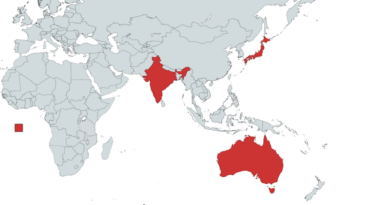Aspirational Districts Programme
Context:
UNDP Report Lauds Aspirational Districts Programme, Recommends Replication in Other Parts of the World
Key Highlights:
- The report said due to concerted efforts made under the ADP, previously neglected districts, including those in remote locations ‘have experienced more growth and development in the last three years than ever before’, the APD ‘has been immensely successful in propelling development among the backward districts’.
- UNDP’s analysis across the 5 key sectors of the ADP—health and nutrition; education; agriculture and water resources; basic infrastructure; and skill development and financial inclusion.
- A comparison between the Aspirational Districts and their counterparts found that ADs have outperformed non-ADs. Across the sectors of health and nutrition and financial inclusion, the report found that:
- 9.6% more home deliveries are attended by a skilled birth attendant;
- 5.8% more pregnant women with severe anemia are treated;
- 4.8% more children diagnosed with diarrhea are treated;
- 4.5% more pregnant women register for antenatal care within their first trimester;
- 406 and 847 more enrolments, and 1580 more accounts opened per 1 lakh population under the Pradhan Mantri Jeevan Jyoti Bima Yojana, Pradhan Mantra Suraksha Bima Yojana and Pradhan Mantri Jan-Dhan Yojana, respectively.
- UNDP also recommends the ‘Malaria Mukt Bastar Abhiyaan’ in Bijapur and Dantewada, which has reduced malaria incidences in these districts by 71% and 54%, respectively, as one of the ‘best practices’ found in Aspirational Districts.
- While exploring the 3Cs,‘Convergence, Competition and Collaboration’, approach of the ADP, the report said most interviewees ‘emphasized on the importance of convergence that fostered moving away from working in silos towards synchronized planning and governance to achieve the targets of the programme’. Similarly, the ‘competition’ aspect too was found ‘to be helpful in promoting better monitoring and creating healthy competition to achieve targets of the programme. This also served as a motivating factor for districts to increase their efforts and track progress’.
- As regards challenges and suggestions, the report said some stakeholders highlighted the need to revise a few indicators that are close to being saturated or met by most districts, such as ‘electrification of households’ as an indicator of basic infrastructure. It was also found that while on average, the districts have seen an increase in resilience and decrease in vulnerabilities, the least-improved districts have witnessed an increase in vulnerabilities, which requires a special focus on the sectors in which these districts have underperformed.
- The report said ADP is ‘aligned to the principle of “leave no one behind”—the vital core of the SDGs. Political commitment at the highest level has resulted in rapid success of the programme’.
Aspirational Districts Programme (ADP)
The Aspirational Districts Programme (ADP) was launched in January 2018 with the vision that renewed focus on interventions in the most backward districts of India. Anchored by NITI Aayog, the programme rests on the three pillars:
- Convergence (of Central and State Schemes)
- Collaboration (between Centre, State, District and Citizens)
- Competition (among the districts through NITI Aayog’s Champions of Change dashboard)
- Aspirational Districts are those districts in India that are affected by poor socio-economic indicators.
- These are aspirational in the context, that improvement in these districts can lead to the overall improvement in human development in India.
- The 115 districts were identified from 28 states, at least one from each state.
- At the Government of India level, the programme is anchored by NITI Aayog. In addition, individual Ministries have assumed responsibility to drive the progress of districts.
- The objective of the program is to monitor the real-time progress of aspirational districts.
- ADP is based on 49 indicators from the 5 identified thematic areas, which focuses closely on improving people’s Health & Nutrition, Education, Agriculture & Water Resources, Financial Inclusion & Skill Development, and Basic Infrastructure.
- With States as the main drivers, ADP seeks to focus on the strength of each district, identify low-hanging fruits for immediate improvement, measure progress, and rank districts.
Impact of Aspirational Districts Programme
- Decentralization of Development: ADP focuses on outcomes that enable local experimentation based on a firm appreciation of ground realities.
- Inclusive approach: The delta ranking of the Aspirational Districts combines the innovative use of data with pragmatic administration, keeping the district at the locus of inclusive development.
- Through ADP government seeks to uplift those districts which have shown relatively lesser progress in achieving key social outcomes.
- Improved Implementation: Spurred by competition based on outcomes, local governments target their efforts and improve programme implementation and design.
- For Example, Health outcomes in ADP saw an increase in registering pregnant women into the health system, institutional delivery of babies and anti-diarrheal treatment, etc.
Challenges Associated with ADP
- ADP is affected by the issue pertaining to insufficient budgetary resources.
- ADP is implemented by multiple ministries which leads to a lack of coordination.
- Data High-quality administrative data is critical to improving programme implementation and design at the local level.
- The Delta ranking itself is largely focused on assessing quantity (that is, coverage of access) rather than quality.
- On-time delivery of textbooks in schools are part of the ranking index, However, textbook delivery may or may not be a problem in districts.
- Also, the quality of education in India is in a dismal condition, as highlighted by the ASER report.
Source: PIB
Mains Question
Q) The Aspirational District’s Programme seeks to remove heterogeneity in socio economic indicators reflected in prevalent inequality in districts of India Discuss (250 words)____discuss in comment
Error: View 783200c6n2 may not exist



